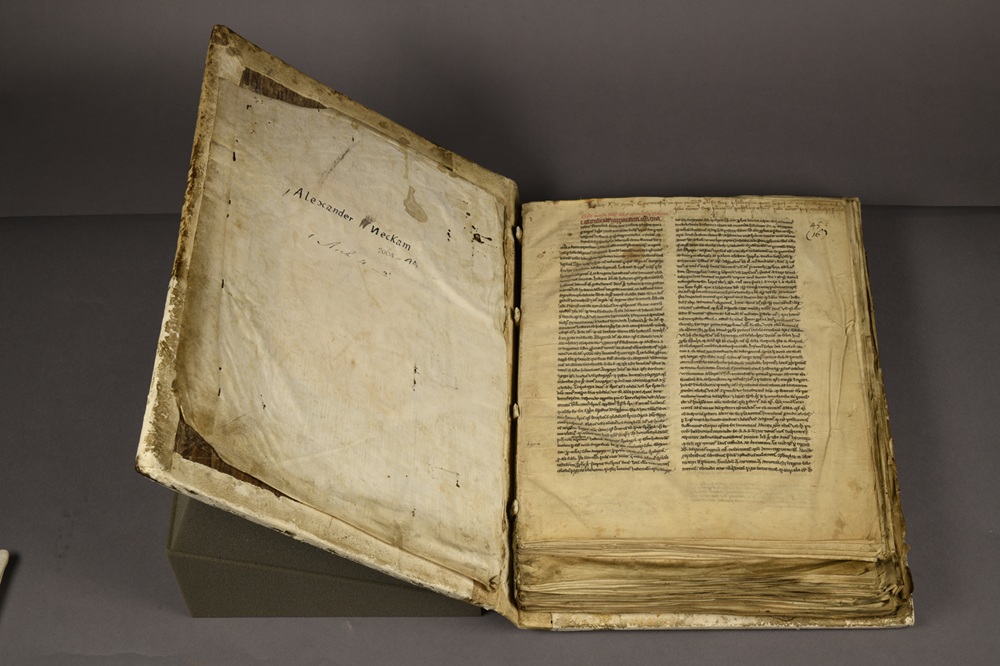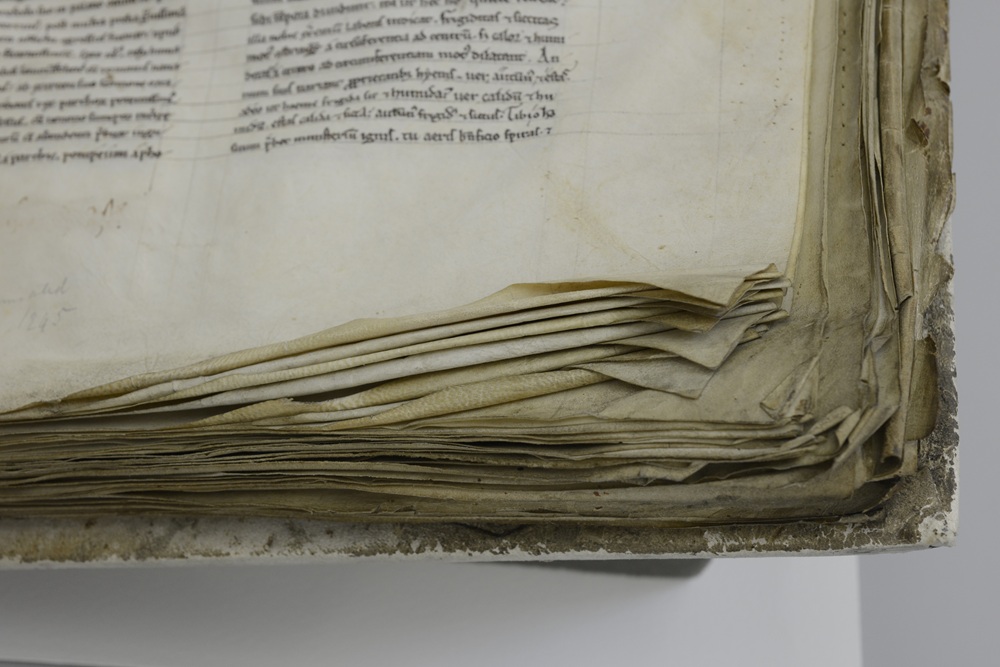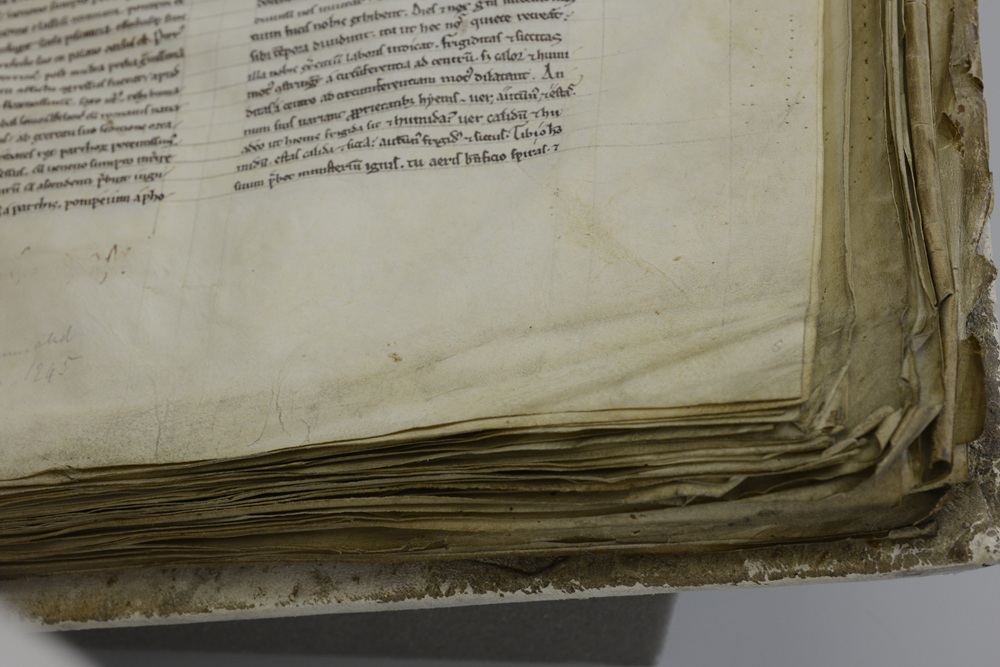Thanks to alumni support, Jesus College has been able to conserve and digitise the oldest known set of lecture notes from medieval Oxford, known as MS 94. Andrew Dunning, Hugh Price Fellow in Book History and R.W. Hunt Curator of Medieval Manuscripts at the Bodleian Library, and Nikki Tomkins of the Oxford Conservation Consortium, took on the careful conservation process to make this important medieval manuscript accessible for the first time.
Alexander Neckam (1157–1217) was the first ‘master’ to describe himself as ‘reading publicly’ or lecturing in Oxford. He left a collection of working papers after his death that colleagues at his later home of Cirencester Abbey bound together in a volume, now Jesus College MS 94. This manuscript includes lectures on the Psalms from Alexander’s teaching in the 1190s, and Treatise on the Strong Woman, an analysis of the leading roles of Mary Magdalene and the Virgin Mary in the medieval church. The manuscript is inscribed with the response to Neckham’s application to a teaching position in his home town of St Albans: Si bonus es venias; si nequam nequaquam – ‘If you are good, you may come; if wicked (nequam), by no means.’ He obtained the position, and was often known afterwards as Alexander Nequam.

Opening at the front of the volume, showing the broken sewing supports and upper board attached only via the overing material
Conservation treatments aim to preserve the material and functional aspects of cultural heritage. MS 94 is preserved in a remarkable thirteenth-century binding structure, with a composite parchment text block sewn on double alum-tawed supports, laced through channels in the wooden boards on either side. Bindings are mechanical objects: their structures work to enable access to the text while also protecting it from damage.
The volume arrived at the Oxford Conservation Consortium with numerous edge tears, pleats in the pages, and a detached upper board. The primary objective of the treatment was to enable MS 94 to be handled safely during digitisation without further damage. Conservation addressed the mechanical function of the binding, while preserving as much of the original material as possible. Because the volume is a collection of unfinished materials that were not originally intended to fit together, its pages had pleated over the centuries. With the folds in place, it was not possible to turn the pages without handling and separating out of the pleats. The pages were susceptible to further pressure and damage unless the folds were once again nested together.

Before and after treatment images showing the pleated page edges that were lightly humidified and flattened.

The decision was made to use light humidification to relax the parchment before drying it flat under tension. This task requires a careful approach, as too much moisture can cause irreversible denaturation of the collagen triple helix. There were numerous tears to the edges of the pages throughout the volume. Some were at risk of catching and tearing further into the page and impacting on the text. Nikki Tomkins decided to prioritize these tears for repair, using a gelatin adhesive and lightweight kozo-fibre handmade tissue from Japan.
Treating an object this old invariably means working with previous repairs from centuries past. In particular, MS 94 has some examples of alternative tear-repair that predate the manuscript text itself, where thread was used to stitch together a tear during the parchment skin’s production. The conservation and digitisation of this manuscript through the Development Disbursement Fund makes it accessible for the first time to readers around the world. MS 94 symbolises the continuity of Oxford’s intellectual tradition, connecting contemporary scholars with the insights of a twelfth-century master.
The digitized version of MS94 will be available shortly to view on the Digital Bodleian platform.
This article first appeared in the Jesus College Record 2024.
